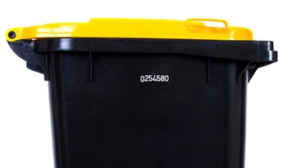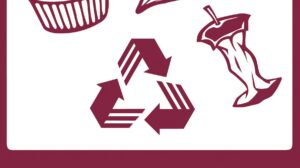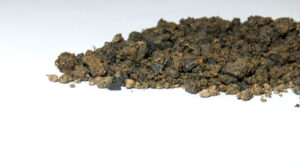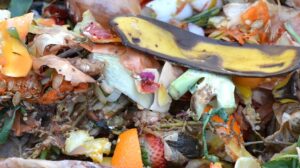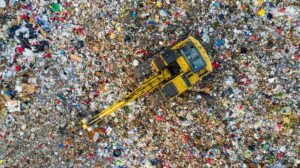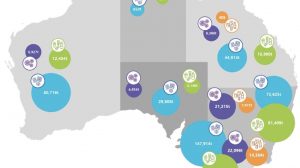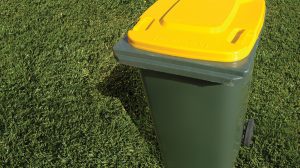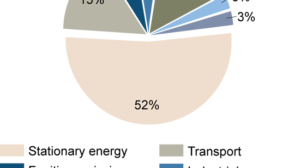Circular Economy
9 April 2021
Bin colour matters
Federal Environment Minister Susan Ley supports standardised waste collection systems, including a common bin lid colour across Australia. We propose to also standardise the colour of the bin's body to maximise recycled plastic use.
Circular Economy
9 April 2021
Is FOGO inevitable?
More and more councils now collect FOGO at the kerbside. Will three bins become the new standard?
Circular Economy
1 March 2021
Open letter to Australia’s Mayors – Why waste matters to your carbon footprint
The single biggest greenhouse gas emissions decision you will make as Mayor, is “Are we still sending organic waste to landfill?”
AWT
19 February 2021
Could pyrolysis save the planet?
There is only one technology that we know of that can reliably suck carbon dioxide out of the atmosphere and sequester it. Photosynthesis. It is what every plant on the planet does every day.
Circular Economy
24 December 2020
Reviewing the Review From Rubbish to Resources – Building a Circular Economy
Karinne Taylor critically reviews the House Committee on Industry, Innovation, Science and Resources report “From Rubbish to Resources: Building a Circular Economy”.
Circular Economy
15 December 2020
Organics revolution needs a nudge
Landfilled organics result to significant GHG emissions and a waste of valuable nutrients.
Banning the landfilling of household and commercial food and garden waste would stimulate jobs growth, divert millions of tonnes from landfill, generate compost, sequester carbon in soils and reduce Australia's GHG footprint.
Circular Economy
2 November 2020
The role of landfills in a circular economy
Waste is like a river that flows downhill to the cheapest price. Landfills are like big vacuum cleaners - they suck up waste and resources indiscriminately. If we continue to supply cheaply priced landfills, then that is where our waste will go.
There will always be a place for well-run landfills. But if we want to create a circular economy, then the first and most obvious thing we need to do, is stop the one-way flow into landfills.
Circular Economy
29 September 2020
Key points on COAG export bans
One of the most interesting Coffs Waste sessions this year was the COAG panel discussion addressing the forthcoming export bans on glass, plastics, paper and tyres where Minister Trevor Evans made a number of interesting key points.
Circular Economy
27 July 2020
National Waste Action Plan 2019
The National Waste Action Plan 2019 was agreed by Federal, State and Local governments setting national targets and actions for reducing waste to landfill. To achieve this, industry, waste generators and local government need the right market signals and regulations to drive the necessary investment.
Circular Economy
10 June 2020
2 years since Asia stopped taking our recycling. Where do we stand?
It is more than two years since China National Sword and the limitations on export to Asian recycling nations, kicked in.
Recycling has not collapsed but it has taken some pretty big hits. So where are we up to now?
Circular Economy
27 May 2020
Can FOGO work in MUDs?
Following up on Virginia Brunton's well received "Where to with food waste" article, Mike Ritchie discusses FOGO in MUDs.
Mike argues that collecting FOGO from MUDs is not just feasible, it is necessary. Getting food and garden waste out of all households will:
- reduce #waste to #landfill by 50% or more
- save up to 2.7% of Australia’s GHG emissions and
- produce millions of tonnes of soil enhancing compost.
Carbon
26 May 2020
Creating economic wealth from emissions reduction – a case study of recycling
The waste and recycling industry contributes close to 3% of Australia’s direct emissions. However, recycling abates much more by capturing the embodied energy of the recovered materials.
We can create a more sustainable Australia by reducing emissions, increasing recycling and growing new green jobs.
Sign up for all our latest articles
Blog categories
- Awards (9)
- AWT (1)
- Bin Trim (2)
- Carbon (27)
- Circular Economy (44)
- Climate Change (33)
- Compost (20)
- EfW (13)
- Event (12)
- FOGO (26)
- Grants (79)
- In the Media (15)
- Infrastructure (31)
- Landfill (29)
- Legislation (13)
- Levy (7)
- Licencing (5)
- litter (4)
- MRA News (51)
- MRA Projects (8)
- NSW (12)
- Organics (22)
- Planning & Approvals (10)
- Policy (65)
- Recycling (69)
- Regulations (4)
- State of Waste (8)
- State Strategy (23)
- Strategy (42)
- Waste (90)
- Waste Myths (9)
- wastenot (35)
